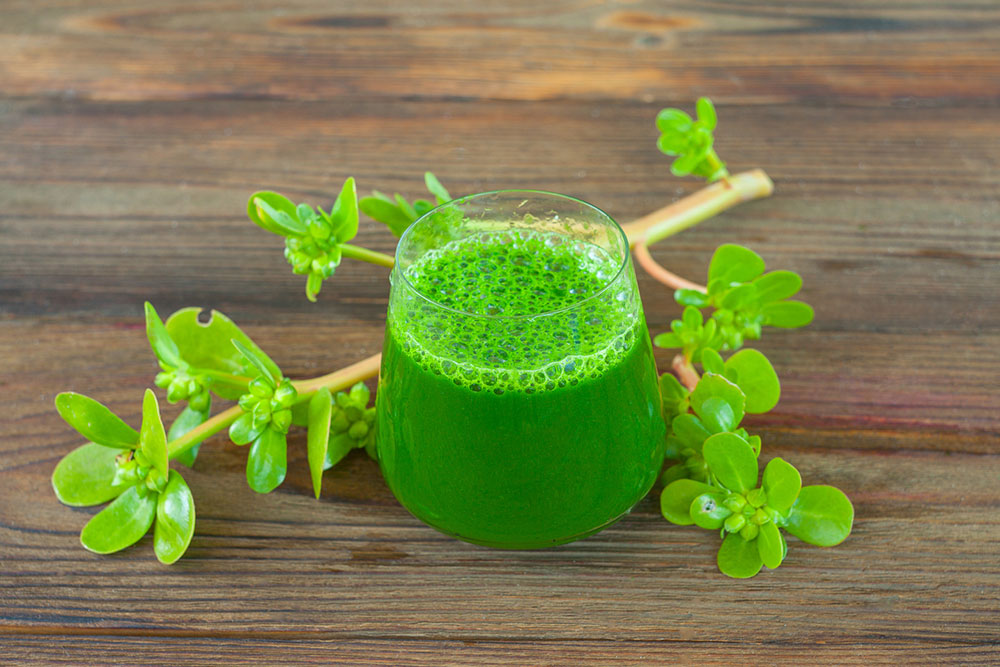4 Natural Remedies to Control Purslane Infestation
Purslane, a common garden weed, can be a constant problem for gardeners and homeowners alike. Its ability to grow rapidly and spread makes it hard to control. However, several effective methods exist to remove purslane from one’s garden or yard. From manual pulling techniques to organic remedies, there are options to suit various preferences and environmental considerations. Keep reading to explore natural remedies to tackle this weed infestation and restore order to one’s outdoor space.

What is purslane?
Purslane is a garden weed that is infamous among homeowners for its survival methods. It is known for its ability to grow rapidly in various conditions. Once uprooted, this plant has a way of returning to life through rerooting or continuing to mature. Identifying purslane outdoors is easy. It is a succulent plant that grows outward in a circular form, close to the ground. Purslane plant has fleshy red stems that contain small green paddle-shaped fleshy leaves. Its flowers are star-shaped and yellow in color. Its distinctive appearance makes purslane stand out quite easily in gardens. Purslane usually grows in clear, uncultivated, or recently cultivated soil.
There are many reasons why purslane removal is crucial for one’s garden space. Firstly, this weed spoils the overall appearance of an outdoor space. Additionally, this toxic weed does not need too many nutrients to live. It is known to thrive in even the poorest quality of soil and areas of drought. Purslane infestation can utilize the essential nutrients from the soil, originally intended for the grass and other plants. These plants and grass varieties require nutrients for their development and sustenance. There are many ways to eliminate purslane, including organic and home-based remedies and special purslane repellents.
Natural remedies to eliminate purslane
As implied earlier, using natural techniques to deal with purslane works well for the other plants and the soil in one’s garden. Here are some proven remedies that help eliminate purslane infestation from one’s garden space.
Using vinegar
Vinegar is a known weapon that naturally repels purslane and other weeds. Household vinegar can drain the moisture that sustains weeds in gardens and farms. One can buy vinegar from the local supermarket and use it for efficient purslane removal. In fact, vinegar is one of the fastest ways to get rid of purslane. Domestically available vinegar contains a specific percentage of acetic acid, which can destroy both weeds as well as plants. Therefore, one must use a pump sprayer to carefully apply vinegar exclusively on the weeds (but ensure one avoids spraying the plants surrounding it. vinegar will suck out their moisture and leave them in a dry, brown appearance). Once the moisture of the purslane weeds is taken out and they perish soon after, people can cut and dispose of the dry waste that is left out.
Hand-picking young purslane
Controlling purslane expansion is a major aspect of purslane removal, as the aggressive weed tends to grow rapidly. One of the main ways to do this is by hand-pulling the purslane in the grass while it is still nascent and young enough. One must ideally pick off the young purslane weeds before they begin to seed. Not doing so on time results in the weed dispersing its seeds into its surrounding areas.
One must be careful while hand-picking purslane. Ensure that the soil from which purslane is cut off is not disturbed very much. If the soil gets overturned when one picks up the weed, then the purslane seeds land on the surface of the garden and may spread even more aggressively and faster.
Removing plant fragments to prevent rerooting
Removing plant fragments is an efficient way to prevent the growth and expansion of purslane. Once the weeding is done, homeowners must collect and place the plant fragments and plant matter into a paper bag or container so that the fragments do not facilitate the regrowth of the purslane weeds. The stems and leaves of purslane tend to reroot themselves in no time. So, it’s important to remove all the fragments to prevent them from growing back in the garden or outdoor space.
Soil solarization for up to 6 weeks
As stated above, moisture and nutrition contribute highly to the growth of purslane weeds. Therefore, it helps to use plastic covers to prepare a bare garden space before planting. One must ensure that the temperature underneath the plastic reaches 130 °F (54 °C). Ground stakes and heavy rocks can hold the black or transparent plastic sheeting in place over the protected area.
This covering process is known as soil solarization. For this mechanism to work, the plastic sheet over a given land area will absorb and trap the sun’s heat and transmit it to the soil. It causes an extreme overheating of the soil area under the covers. The high temperature efficiently kills any seeds, weeds, or unwanted plants that grow near the soil’s surface. Soil solarization works best when the soil in the space is wet or even moist.
Some other helpful natural techniques include applying ammoniated soap to the soil and mixing salt and vinegar to the soil beneath the weeds.















